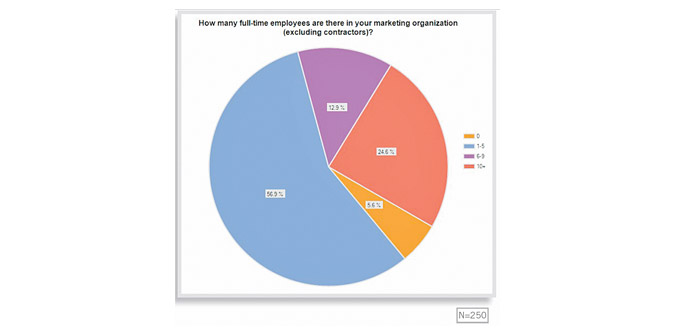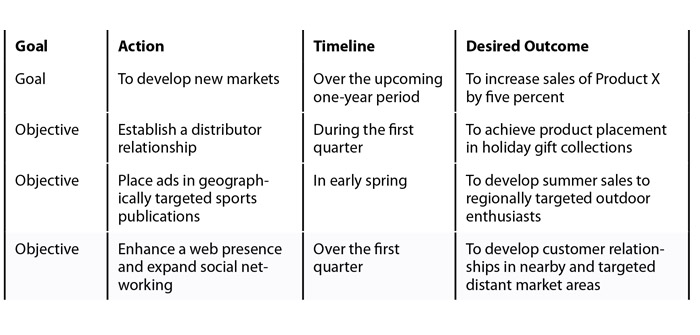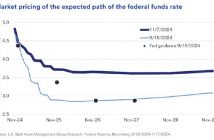March, 2018 is almost past and businesses throughout Central Oregon will soon be analyzing first quarter sales results looking for indications of successful marketing efforts that were probably implemented late last year. Odds for success will be in your favor if your marketing efforts include:
• A strong marketing team;
• A documented marketing strategy; and
• State of the art tools.
Strong Marketing Team
According to the Oregon Employment Department, 78 percent of Oregon businesses have nine or fewer employees and the average private business employs 11 people. To an even greater extent than the state, Central Oregon’s business environment is typified by innovative, small companies, producing niche-market products and services. With that in mind there is a strong probability that your marketing team is small in number or it may be only you. Not to worry. According to a recent survey by Wasp Barcode Company of 250 small business customers, 71 percent of companies with 25 employees or less have only one to five employees devoted to marketing.
The good news, however, is that some of the most effective, admired marketing teams in the business are “only” about three-five people.
A small group of talented people who work hard and smart as a cohesive team can often beat larger teams. Even much larger teams. Especially in markets that change fast. The agility of smaller teams can often trump the resources larger teams wield.
Good Greens was founded by Keith Pabley in 2011 when he was working with a physician to improve his practice. Keith discovered that the healthy bars the physician was recommending tasted awful, but they couldn’t find ones that didn’t.
So he created Good Greens Bars — gluten free, dairy free, natural super bars with forty antioxidants and three probiotics.
Pabley didn’t have a large marketing budget. Instead, he built relationships with local bloggers to increase the number of reviews, mentions and search engine results for Good Greens. Three of their flavors became the number one, two and three selling bars in Cleveland. His sales jumped fifty percent in four months. Now Keith’s bars are in over 1,200 stores.
Here are some suggestions from the experts to build a successful small marketing team:
1. Automate
Don’t expect your team to have the expertise to do everything. It doesn’t mean any human has to do it, either.
So invest in some basic marketing automation including:
• Automate your onboarding emails
• Automate running reports
• Automate sending invoices
• Create a good enough self-support area on your website so customers and prospects can actually help themselves
2. Outsource as much as possible
Your small team has to do a lot of different tasks. It’s good that they should be constantly learning new skills, but some skills may not be worth learning. Take video editing or sound editing, for example. It needs to be done, but learning the software, and doing this very specialized task can take a lot of time. For example, there are dozens of people on Fiverr who are total pros at video and sound editing. Those pros can get more done in an hour than your team member can do in a day. And they’ll charge less than what you’re paying that team member.
3. Invest in training
Some skills should be outsourced; some skills should be maximized. So buy your team some training. If you do, you’ll automatically be in the top 21 percent of small business marketing teams.
The Wasp Survey found that 21 percent of small business owners plan to invest in training or tools to improve employee productivity. That’s not so great, but it could be competitive advantage for you, if you’re willing to invest.
A Documented Marketing Strategy
What’s the one marketing best practice that separates the successful marketers from the rest?
It’s not the size of their budget. It’s not the size of their team. It’s having a documented marketing strategy — a plan on paper — that is backed with data from market research, uses a calendar to track projects and provides feedback on goals for each project.
It’s especially important to include goals and objectives in your marketing strategy. A survey of content marketers done earlier this year found that successful marketers are 4.3x more likely to set goals with objectives than average marketers.
The Business Plans Kit for Dummies, Fourth Edition gives the following example for the marketing goal of, “Develop new markets for products and services” and accompanying objectives:
1. The goal, “Develop new markets for products and services” may be expanded to “Develop new markets to increase sales of Product X by five percent over the upcoming one-year period.”
2. Set objectives to define how you’ll achieve your marketing goals.
Each Goal should specify an action and a desired outcome.
Establishing realistic goals should be based on research. Resources for this research includes trade associations for your particular market niche, interviews with other local or regional businesses, the local Chamber of Commerce and the local Community Librarian. Deschutes Public Library has a particularly robust set of research tools and the Book a Librarian program can help sort out the data.
A budget is also part of a successful marketing/sales strategy. John Wanamaker, one of the most successful retailers in American History is credited with the famous quote, “Half the money I spend on advertising is wasted. The trouble is I don’t know which half.”
No doubt Wanamaker spent plenty of money on advertising, and he used the best techniques of his day – target as best you can, hope your message connects and gets corresponding results if you’re lucky. Ironically, this basic marketing approach lasted from Wanamaker’s day until just a few years ago. But times have changed and so has the opportunity to target and measure marketing with precision.
State of the Art Tools
You’ve heard of Google right? Paid search is the most fundamental change in ad targeting in 100 years. And now Facebook enables ad targeting with arguably even more precision.
A recent marketing survey by www.webstrategiesinc.com provided predictions for successful marketing teams:
In 2018, the average firm is expected to allocate 41 percent of their marketing budget to online, and this rate is expected to grow to 45 percent by 2020.
• Search engine marketing will capture the largest share of online spend with online display (banner ads, online video, etc.) taking the second largest share
• Social media advertising investments will continue to grow, with a 17 percent compound annual growth rate from 2016 to 2021, and is expected to represent 25 percent of total online spending in 2018.
• Mobile marketing has grown to a point that it’s no longer tracked in the forecast and it’s presumed to be considered across all channels
• Digital marketing is pacing at an 11 percent compound annual growth rate between 2016 and 2021 with the biggest growth occurring in online video.
• Investment in paid search, display advertising, social media advertising, online video advertising and email marketing is predicted to account for 46 percent of all advertising by 2021.
The trend in online marketing, however, includes two important elements to effectively engage the online audience as reported in Forbes, February 14, 2018:
1. User-Generated Content
In the next year, consumers will crave authenticity from brands. 86 percent of consumers say authenticity is important when deciding what brands they support, and sixty percent say user-generated content (UGC) is the most authentic form of content. By integrating trusted and engaging UGC throughout their multichannel marketing efforts, brands can win consumers’ hearts and wallets.
2. Honesty
Brutal honesty is a current trend that has been gaining steam, and we should all expect it to continue in 2018. Marketers can take advantage by clearly stating what their products and services are good at and where they need improvement. These statements can be backed up by objective customer reviews. This honesty translates to brand integrity, leading to trust and sales.
Conclusion
Even though the First Quarter, 2018 is almost gone, there is still plenty of time left to put into place a strong marketing team; a documented marketing strategy; and state of the art marketing tools so that 2018 ends up being your best marketing year yet.
Bruce Barrett is a Certified Mentor with SCORE Central Oregon and a commercial broker with Windermere Commercial Real Estate. He can be reached at barrett@windermere.com






